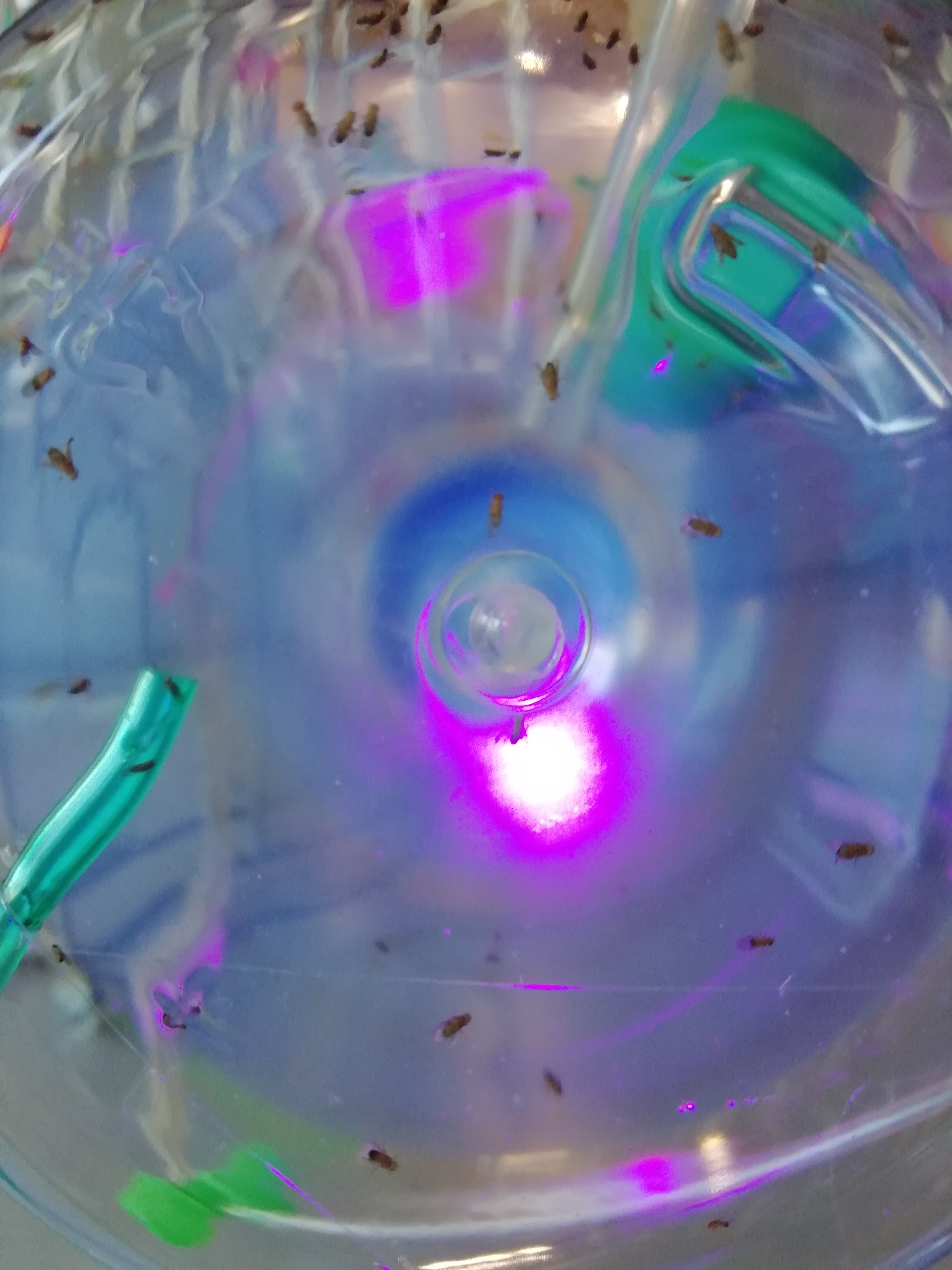How to think about civilizational reorientation? The pertinence of this question, so inherent to the present day, alerted the intervening artists, Paulo Bernardino Bastos and Ana Santos, involved in this exchange of practices. In parallel and through drosophila flies, the scientific body of this project follows the development of their mitosis, revealing the general question of the investigative apparatus: why does this happen? In agreement with the very structure found within the laboratory, the artists noticed a whole architecture of spatial organization surrounding the fly colonies themselves - comparative to a production factory. They then realized that there were certain parallels to what we, as a society, generally recognized as aspects of civilization's organization [small spaces, in the form of pipettes, in which small "families" live, having as their primary condition reproduction instigated with the excess of resources through food, which, in its absence, turns into death. What interested us the most were the small gestures inherent in decision-making to culminate in the common purpose, survival. Even if it is suicidal, the decision-making for survival by these beings goes beyond their individuality and in fact, becomes a generational need - the mistake that leads to repetition and reproduction of the same gesture.
Moscópolis became an essay on the choice and reorientation of these flies.
We were interested in understanding what decisions they would make when faced with new environments, different partners, different foods, and the option to be alone or accompanied. From the local to the global, this project instigates us to think about the architectural orderings themselves, the geopolitical strategic reorientations, which are also thoughts of simulation to domestication, as a rationalization of food, in the right to territory or in the management of the ecology of space. The use of everyday materials proposes to think its own excess, as well as and, in counterpoint, alters the logic of sophistication and scientific apparatus found in laboratories.




Date 2022
Authors Paulo Bernardino Bastos and Ana Santos
Various plastics and Variable dimensions
Acknowledgments Carlos Conde, Nelson Leça, Mariana Gonçalves, Sofia Silva, Augusta Monteiro, Margarida Gonçalves, Mariana Osswald
Hosted on i3s Porto and Ectopia Lisbon
Founded by Garantir Cultura Programme 2021/22